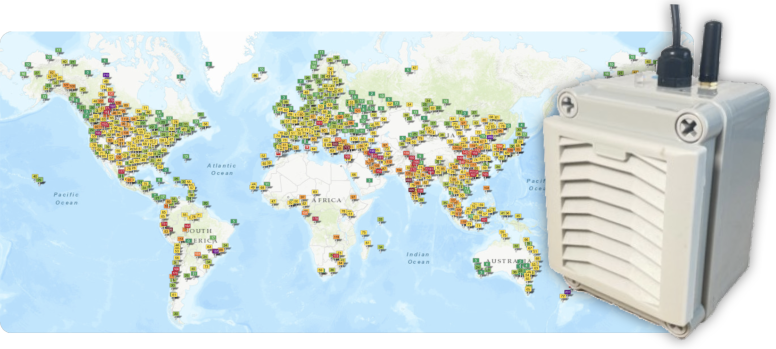สสอ.เนินมะปราง อ.เนินมะปราง จ.พิษณุโลก, Noen Maprang, Thailand Air Pollution🇹🇭 Real-time Air Quality Index (AQI)
Air Quality widget & API access
Looking for another city?
| | |
| or let us find your nearest air quality monitoring station |
Know any Air Quality station in your surroundings?Participate with your own air quality monitoring station
Our GAIA air quality monitors are very easy to set up: You only need a WIFI access point and a USB compatible power supply.
Once connected, your real time air pollution levels are instantaneously available on the maps and through the API.
The station comes with a 10-meter water-proof power cable, a USB power supply, mounting equipment and an optional solar panel.
Air Quality Rankings
AirNet Sensor Data Quality Analysis
This station is part of an air quality sensors network.
In order to ensure the highest level of data quality, the signal to noise ratio (SNR), defined as the coefficient of variation from the hourly readings, should be relatively low (below 33%).
Any measurement with SNR constantly higher than 10% could be biased because of incorrect sensor readings (such as defective fan or dust accumulation).
AirNet World Wide Map
Airnet Network Feeds
About the Air Quality and Pollution Measurement:
| AQI | Air Pollution Level | Health Implications | Cautionary Statement (for PM2.5) |
| 0 - 50 | Good | Air quality is considered satisfactory, and air pollution poses little or no risk | None |
| 51 -100 | Moderate | Air quality is acceptable; however, for some pollutants there may be a moderate health concern for a very small number of people who are unusually sensitive to air pollution. | Active children and adults, and people with respiratory disease, such as asthma, should limit prolonged outdoor exertion. |
| 101-150 | Unhealthy for Sensitive Groups | Members of sensitive groups may experience health effects. The general public is not likely to be affected. | Active children and adults, and people with respiratory disease, such as asthma, should limit prolonged outdoor exertion. |
| 151-200 | Unhealthy | Everyone may begin to experience health effects; members of sensitive groups may experience more serious health effects | Active children and adults, and people with respiratory disease, such as asthma, should avoid prolonged outdoor exertion; everyone else, especially children, should limit prolonged outdoor exertion |
| 201-300 | Very Unhealthy | Health warnings of emergency conditions. The entire population is more likely to be affected. | Active children and adults, and people with respiratory disease, such as asthma, should avoid all outdoor exertion; everyone else, especially children, should limit outdoor exertion. |
| 300+ | Hazardous | Health alert: everyone may experience more serious health effects | Everyone should avoid all outdoor exertion |
To know more about Air Quality and Pollution, check the wikipedia Air Quality topic or the airnow guide to Air Quality and Your Health.
For very useful health advices of Beijing Doctor Richard Saint Cyr MD, check www.myhealthbeijing.com blog.

